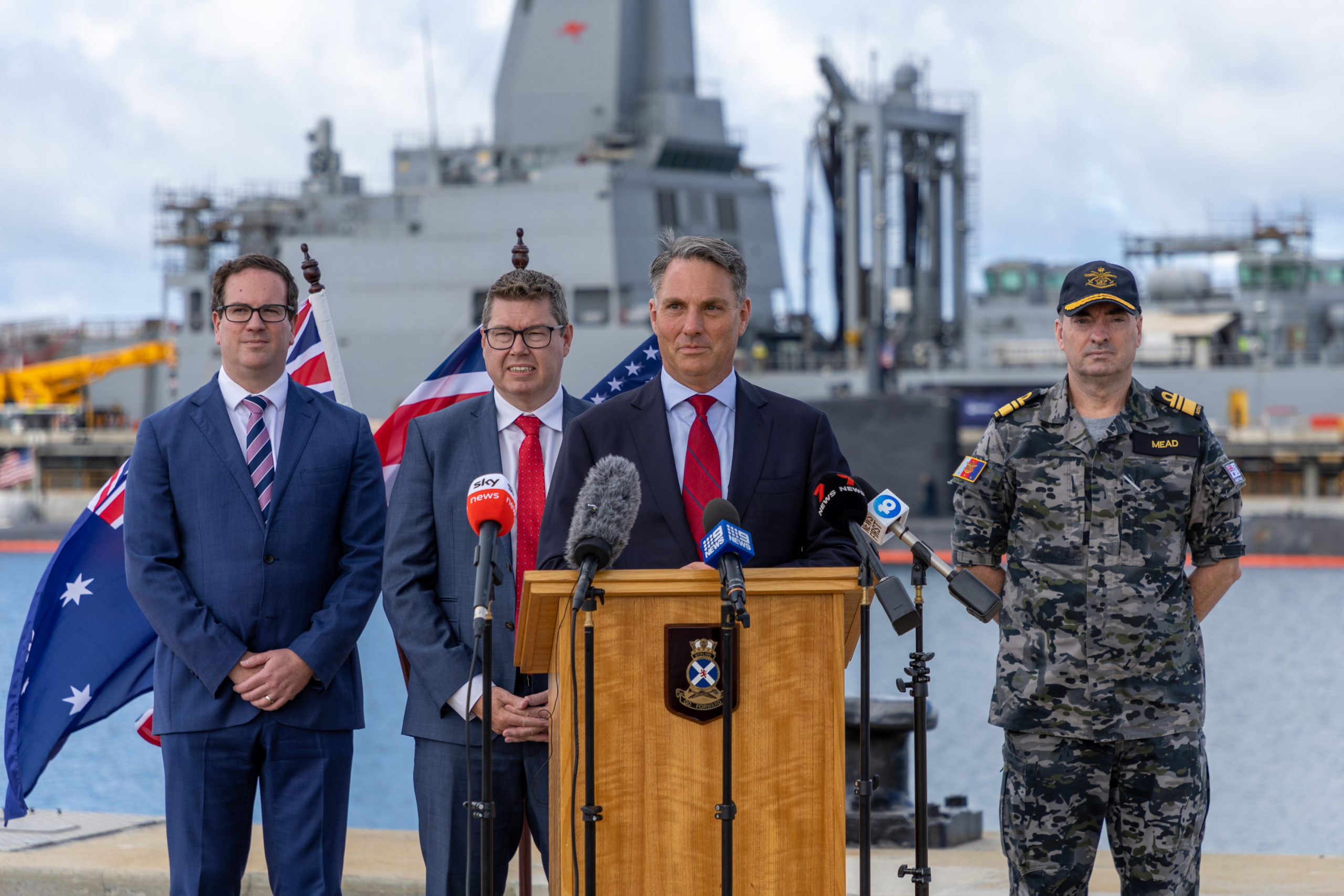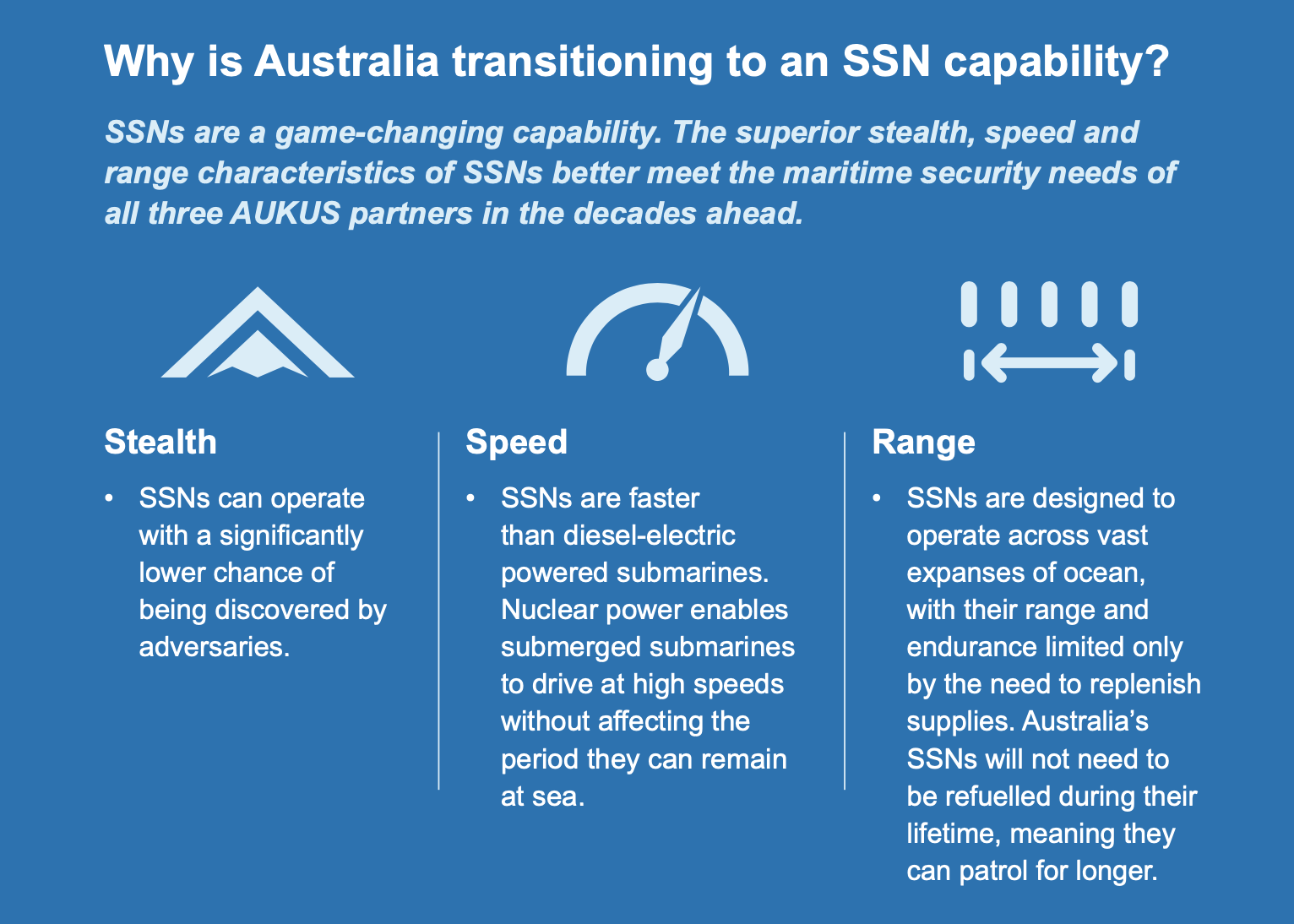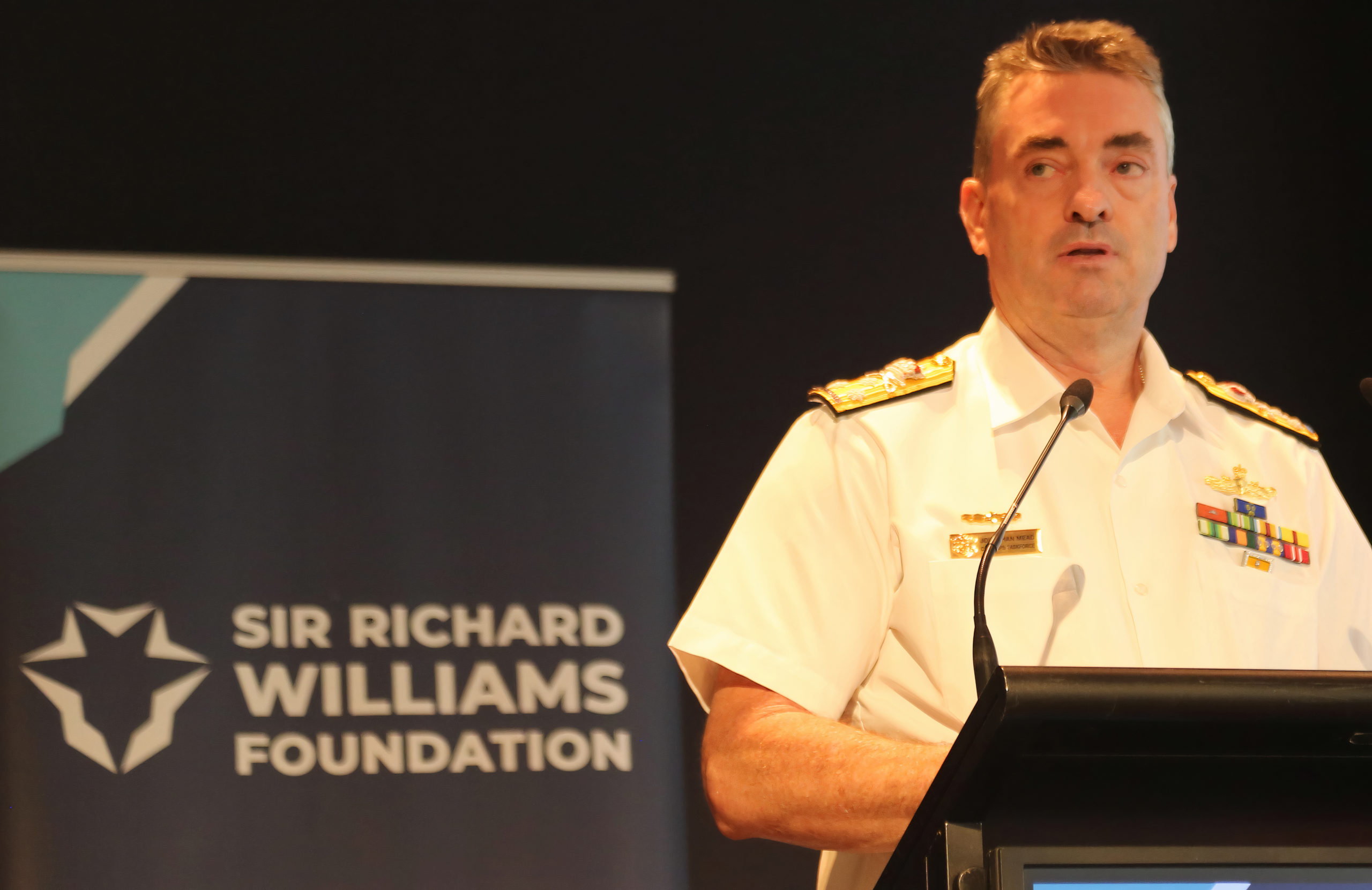By Robbin Laird
In March 2020, I was visiting Western Australia including HMAS Sterling. I was there to visit the HMAS Rankin, one of the Collins class submarines homeported at HMAS Sterling on Garden Island. When I informed a senior U.S. Navy Admiral that I was going to visit the Royal Australian Navy at Garden Island, he wrote: “Awesome, say hello to the fellas down south, incredible team! And absolutely critical in/out of a fight.”
Little did I know at the time of my visit which was 12 March 2020, that in fact I was visiting a future SSN base. I also did not know that I was about to have to escape Australia to get back to the United States with the onset of the pandemic.
In my visits to Australia during the period when Australia was working with France on the build of a new generation diesel-powered submarine, my work with the U.S. Navy, my time in France at my Paris apartment and discussions with the French, and my discussions in Australia gave me a good view of progress on this program.
Then in September 2021, while in my apartment in Paris, the Australian, British and American governments announced that Australia was to cancel the French program in favor of an SSN program which would involve the three countries or the Anglo-Saxons as the French refer to the three, although it is difficult to view the United States or the UK in this light as the two countries change significantly.
Being in France, I certainly had a chance to talk with the French and with colleagues in the United States I could do so by phone and video, and of course reached out to Australian colleagues to sort out an initial read on all of this as well.
I wrote several pieces on this development at the time, but not surprisingly, the most perceptive of the pieces was built around an interview with Vice-Admiral Tim Barrett (Retired).
This is what I wrote in a piece published 19 October 2021:
“During my visit to Europe earlier this Fall, the surprise announcement of the Morrison Administration’s decision to shift from their French alliance to deliver a long-range diesel submarine to acquiring nuclear submarine capability through an alliance with the United States and Britain was made. I talked with both French and Australian analysts and provided my initial assessment in a series of articles which highlighted the decision and the dynamics of change associated with that decision.
“But what was clear that the strategic environment has changed dramatically from when the Australian government made its decision to stay with a conventional submarine capability. The nature of the Chinese threat as well as the actions of the Xi Administration has clearly driven a shift in Australian thinking and perceived needs for longer range operational capability in the Indo-Pacific region.
“At the same time, its closest allies in the region the United States and Japan clearly recognize the need to expand their capabilities to operate throughout the region to complicate Chinese operational considerations, and to deter via more capability to operate throughout the wider Pacific as well.
“The announced decision highlighted an 18-month period with Vice Admiral Jonathan Mead in charge on the Australian side of negotiating within the new nuclear submarine alliance to deliver Australian solutions. I interviewed Mead when he was head of Navy Capability in 2016. He then went on to be Commander Australian Fleet and then Chief of Joint Capabilities and Command of Joint Capabilities Group. He has a strong ASW background as well as working closely with the other member of the Quad, namely India. He is now the Chief of the Nuclear -Powered Submarine Task Force….
“I had a chance to discuss these issues on October 14, 2021, in a phone interview with Vice-Admiral (Retired) Tim Barrett, with whom I have had the opportunity to discuss maritime issues since 2015. As the exact nature of what will happen in the program is a work in progress and not really open to public disclosure until that 18-month period is completed, we focused on the context and how one might assess that context.
“Vice-Admiral (Retired) Barrett made three key points. First, the nuclear submarine effort was a strategic one, which was about Australian defense and not primarily focused on a priority on ship building on Australian soil. It is crucial to understand that this is about adding core defense capabilities earlier rather than later and would almost certainly encompass interaction between shaping the eco system for the operation of Australian nuclear submarines and the presence of allied nuclear submarines working with the Australian eco system.
“The second key point was that the priority needed to be focused on adding nuclear submarine capability to the evolving USW or ASW capability which Australia was already building out. The Australian government recently decided to add another squadron of Romeo helicopters to the fleet, and has procured P-8s and Tritons as part of an expanded ASW or USW warfighting capability. The submarine is not a silver bullet for ASW or USW mission sets but part of the evolution of the kill web approach to ASW and USW missions going forward….
“According to Barrett: “The submarine decision is part of a broader set of decisions with regard to how the ADF should respond to the challenges in the Indo-Pacific. This was a deliberate and considered position from the Navy’s perspective, but the political and geopolitical circumstances have changed. This is not the first time that Australia has sought or considered the acquisition of a nuclear submarine.”
“The third key point was that flexibility and innovations will be part of working out a way ahead and he noted that Mead had worked with him previously. When Commander of the Australian Fleet, then Commodore Mead was instrumental in working an innovative plan to manage a temporary capability deficiency for fleet fuel tanking. To shore up a gap, the RAN ‘leased’ a Spanish Navy oiler for 8 months, and the RAN crews trained on the ship and operated the ship in support of the Australian Fleet.
“Eventually, the RAN acquired two new Spanish oilers, but the kind of innovation demonstrated in this example, will almost certainly be part of the way ahead in meeting the challenges of accelerating the operational acquisition of nuclear submarine capacity in support of Australian defense.
“According to Vice Admiral (Retired) Barrett: “The strategic environment has changed. We need to reconsider the balance between sovereign capability for a thirty-year build and the need for creation of capability in the near term. The earlier 30-year period build approach should not be the dominant approach; the capability and its presence to shape deterrent capabilities is crucial and work out over time how the build side of this effort is clarified and put in place. The program needs to be driven by the need for creative capability options first.”
Now after the 18-month period, the three countries announced their joint decision on how to proceed on the Australian approach to acquiring nuclear attack submarine technology and capability. To do so, will require Australia to build a comprehensive enterprise to operate, maintain, to sustain, and build an Australian nuclear attack submarine.
The comprehensive approach to do so was announced in mid-March 2023 in San Diego by the three heads of state. The Williams Seminar was held on 30 March 2023 and is sandwiched between this event and the public release of the strategic defence review sometime in April.

The Australian government released a report laying out how it saw the “partnership for the future” or “the AUKUS nuclear-powered submarine pathway.”
In that report, the government describe the advantage of nuclear-powered submarines and why Australia was transitioning to an SSN capability. “In the future security environment of the Indo-Pacific, conventionally-powered submarines will be increasingly less able to meet Australia’s needs. The United Kingdom Royal Navy and United States Navy retired their last conventionally-powered submarines in the early 1990s because SSNs have superior stealth, speed, manoeuvrability, survivability and endurance when compared to diesel-electric powered submarines.”

At the Williams Seminar, Vice-Admiral Mead provided an overview to the approach being taken to establish a nuclear submarine enterprise in Australia.
In essence, the approach is three-fold.
In the first phase, UK and US nuclear submarines will visit HMAS Stirling, and the Royal Australian Navy will learn how to support these ships during their visits. As part of this standup phase, Australia will work with the United States in operating Virginia class submarines.
In the second phase, Australia will obtain Virginia class submarines and operate anywhere from three to five of these boats going forward.
And in a third phase, Australia will particulate with its partners in shaping a new class of SSNs, which will be British designed but enabled by U.S. technologies. In this third phase, Australia will have built its own submarine yard at Osborne where in effect this would be the fourth nuclear submarine yard in the trilateral alliance. In other words, the notion of building an arsenal of democracy through allied cooperation would be realized.
Vice-Admiral Mead started his presentation by indicating that “in 2027, the U.S. will forward rotate Virginia class submarines to Australia and the UK would rotate one nuclear submarine to HMAS Sterling. The aim of this effort will be to allow Australia to deeply immerse itself in a nuclear-powered program. We will be doing maintenance on Virginia class submarines and will be doing crewing of these submarines out of Western Australia.
“After a period of about four or five years, we will reach the point where our partners and we will be able to ensure that Australia is a safe and secure steward of nuclear technology, of nuclear materials and a nuclear reactors. From that point in time, the United States would offer us for sale or transfer up to five Virginia class submarines.”
This would constitute the standup and launch phase for Australia shaping a nuclear submarine exercise, and really the key one to ensure a capability being able to operate to replace the Collins class submarines. This is really the key effort which enables the threshold to be crossed into a period of operating nuclear submarines.
In my view, this also allows Australia to build its con-ops for integrated USW and ASW with the P-8s, Tritons, and various air and maritime assets, including the coming of maritime autonomous systems to build an integrated offensive-defensive capability to protect Australian sea lanes.
What then follows is working through what a follow-on submarine program would look like. And this effort will entail in depth cooperation with both the UK and the United States. According to Mead: “It will be a follow-on to the British nuclear-powered submarine but will incorporate U.S. technology, including weapons, sensors, VLS combat systems and torpedos.”

Vice-Admiral Mead then looked beyond the pathway discussion to the broader question of what Australia needs to do for this effort to be successful.
The first element is addressing the strategy and being able to gain support for the effort within the Australian public. “We are going to have to be very clear on our strategy.”
Second, Australia must successfully manage the trilateral working relationship. “How can we make the best of Australia working with the U.S. and the UK to delver this capability?”
Third, creating, training and sustaining the appropriate workforce for the enterprise is a major challenge within Australia. “We will be the first country in the world to operate a nuclear submarine without having a civilian nuclear industry. This presents some unique challenges.”
Fourth, Australia needs to build the appropriate infrastructure both in terms of basing and in terms of the shipyard itself. There will be some unique aspects to the yard including shaping high security protection for the yard as well. “We need to design the yard, build the yard and start building the nuclear-powered submarine by the end of the decade.”
Fifth, Australia needs to build an industrial base for this effort which can support and sustain the effort into the indefinite future. Osborne will become the fourth nuclear submarine yard to go with the two in the U.S. and the one in the UK. “Osborne will become one of the most advanced and complex technological hubs in the world.”
Sixth, the security of the enterprise is a major element for success. In addition to the physical security mentioned earlier, the IAEA involvement will be significant in verifying the quality of Australian nuclear power stewardship. “If we don’t have the international community along with us, the enterprise will fail.”
But the point of all this effort was highlighted by VADM Mead at the beginning of his presentation: “there is no more powerful instrument of conventional deterrence than a nuclear-powered submarine capability.”


